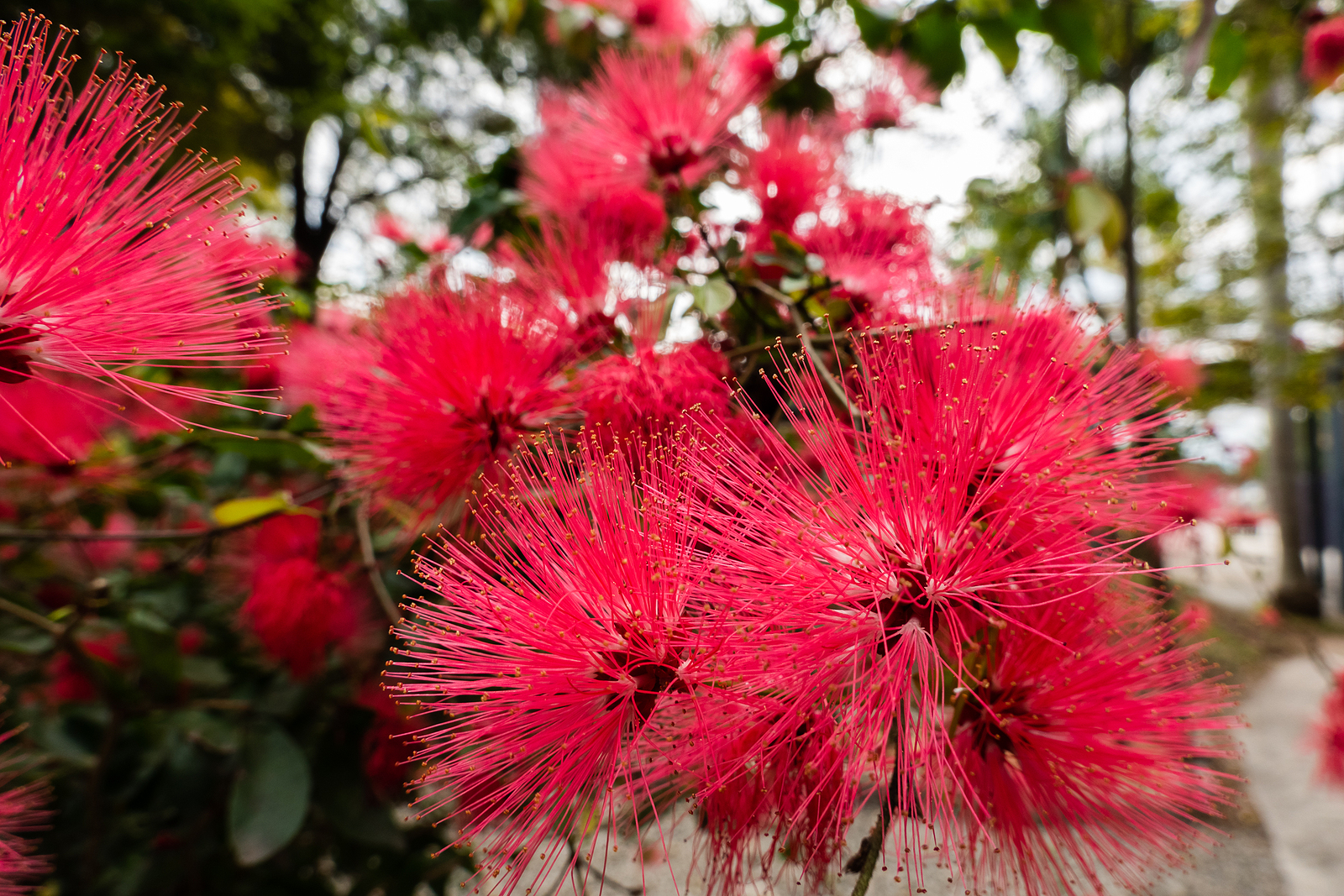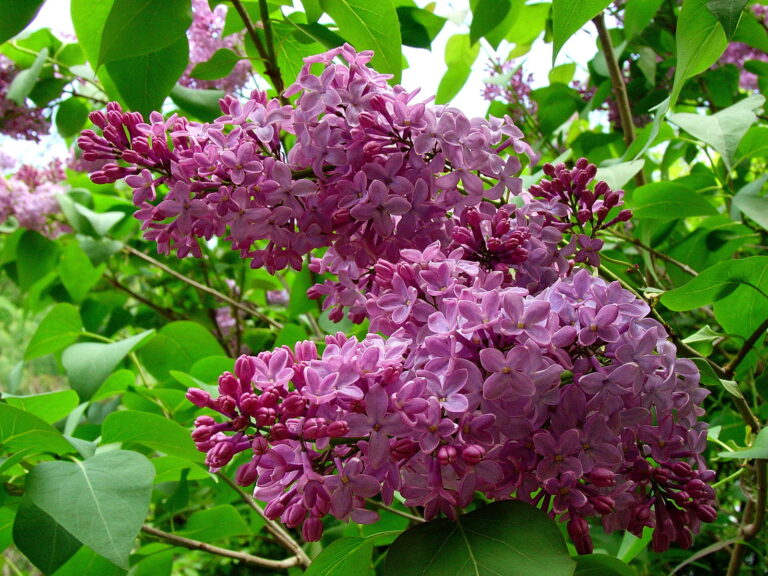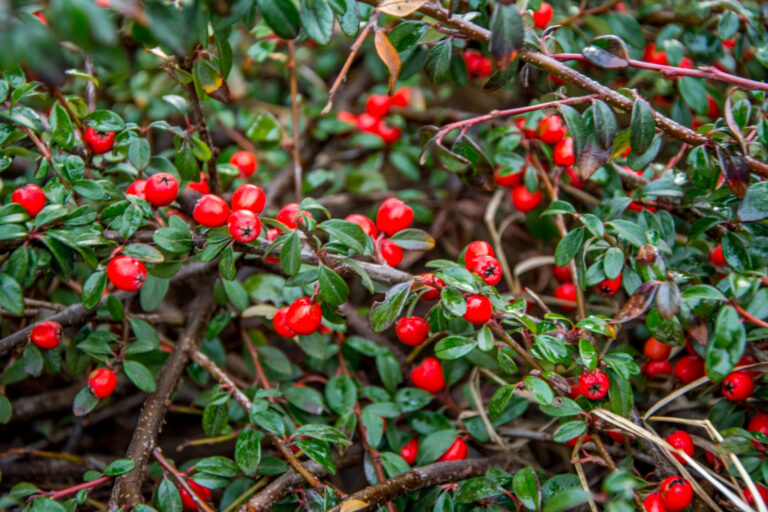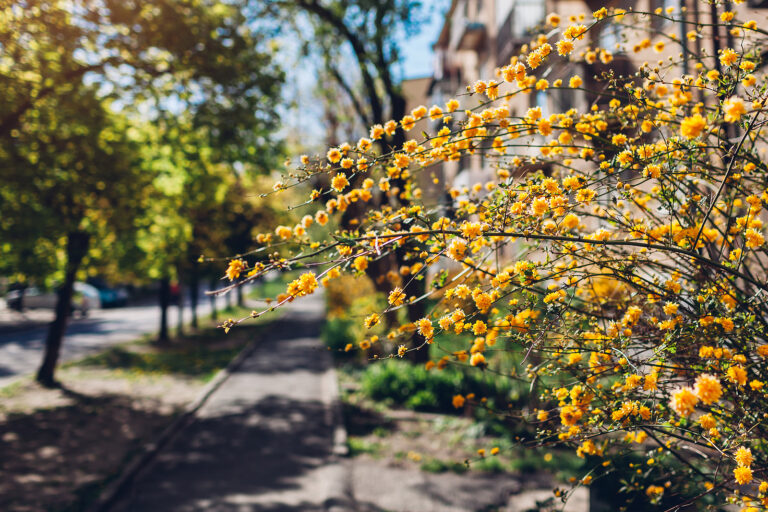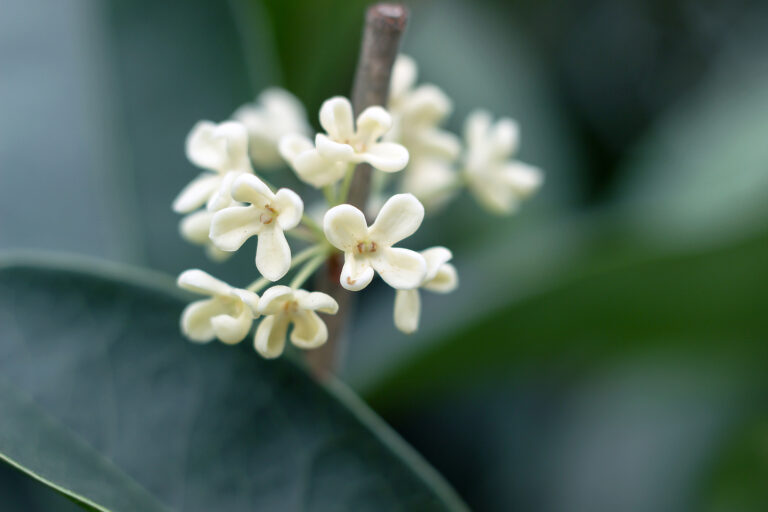How to Grow Calliandra – Powder Puff
Calliandra, commonly known as powder puff or fairy duster, is a genus of flowering shrubs and small trees native to tropical and subtropical regions. The plant is named for its striking, fluffy, ball-shaped flowers that resemble powder puffs. These flowers can come in red, pink, white, or occasionally purple, and they attract hummingbirds, bees, and butterflies. Popular species include Calliandra haematocephala (Red Powder Puff) and Calliandra eriophylla (Pink Fairy Duster).
Growing Calliandra in the garden is a great way to add vibrant color, attract wildlife, and create a tropical atmosphere. Here’s how to grow and care for it.
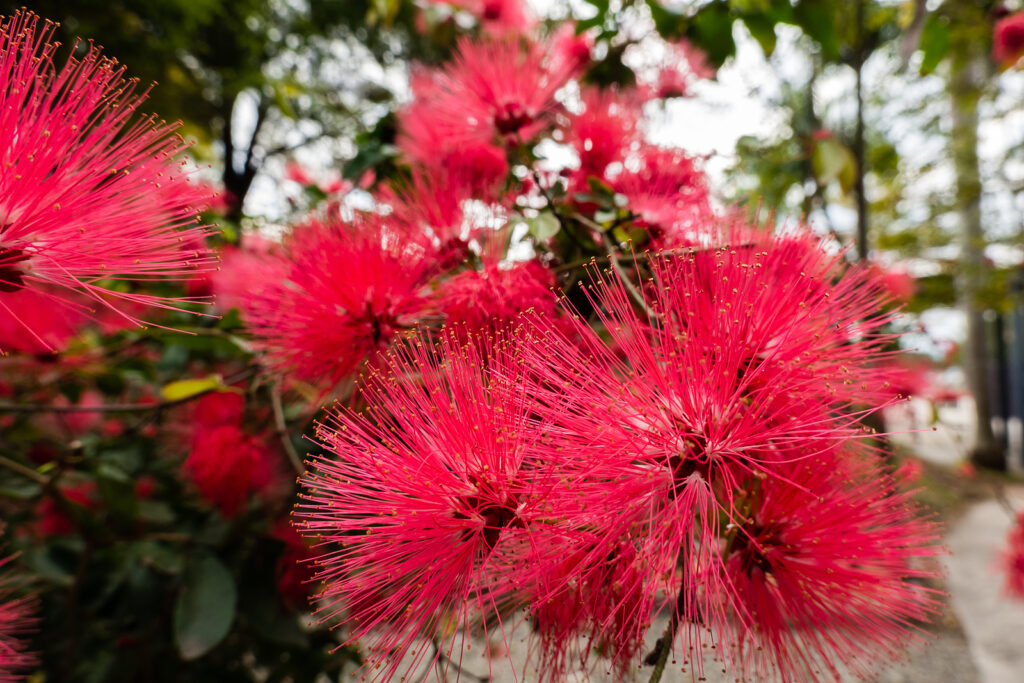
Where to Plant Calliandra
Calliandra thrives in specific conditions, so selecting the right spot is essential:
- Light: Prefers full sun for best flowering, though it can tolerate partial shade. At least 6 hours of direct sunlight daily is ideal.
- Soil: Grows well in well-drained soil, with a preference for sandy or loamy soils. It is adaptable to various soil types, including slightly acidic to neutral pH. The plant does not tolerate heavy, waterlogged soils.
- Space: Depending on the species, Calliandra can grow from 3 to 15 feet in height with a similar spread. Be sure to allow enough room for it to reach its mature size without being crowded by other plants.
How to Plant Calliandra
- Best Time to Plant: Plant Calliandra in spring or early fall when temperatures are moderate. This allows the plant to establish before summer heat or winter cold.
- Preparing the Soil: If your soil is heavy clay, consider amending it with sand or compost to improve drainage. Calliandra does not like soggy conditions.
- Planting Steps:
- Dig a hole twice as wide and just as deep as the root ball.
- Gently remove the plant from its container and loosen the roots if they are root-bound.
- Place the shrub in the hole, ensuring the top of the root ball is level with the surrounding soil.
- Backfill with soil, tamping it down lightly to eliminate air pockets.
- Water thoroughly after planting to help the soil settle around the roots.
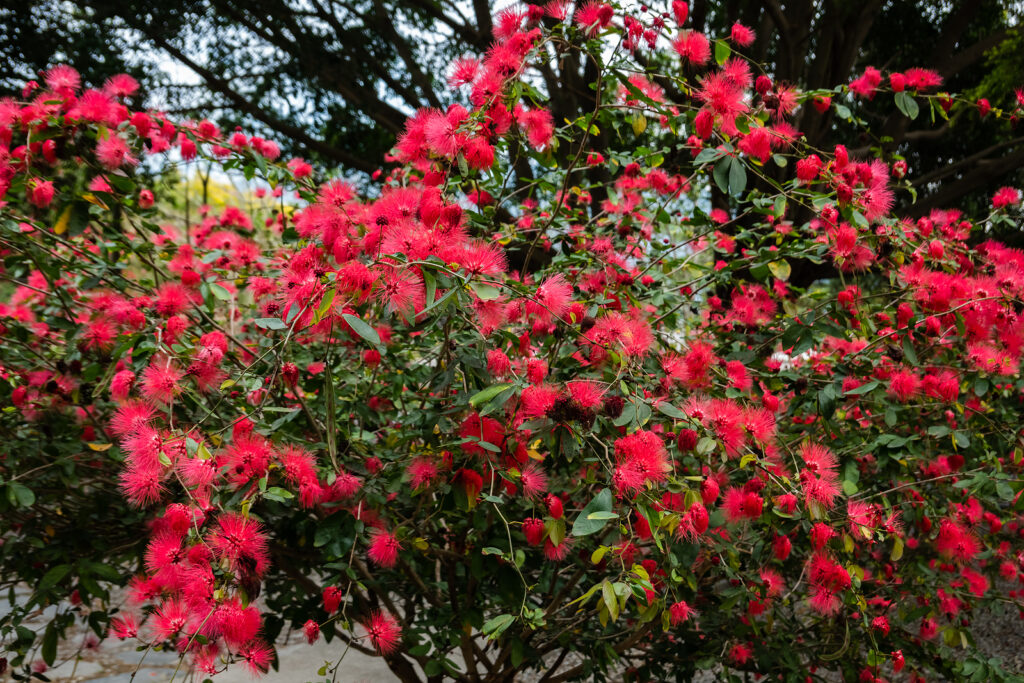
Caring for Calliandra
Watering
- Establishment Phase: Water regularly during the first growing season to help the plant establish a strong root system. Keep the soil moist but not waterlogged.
- Long-term Care: Once established, Calliandra is drought-tolerant but will perform better with occasional deep watering, especially during prolonged dry periods.
Fertilizing
- Minimal Feeding Required: Calliandra typically grows well without much fertilization. However, an annual application of a balanced, slow-release fertilizer in early spring can encourage growth and flowering.
- Organic Option: A layer of compost or well-rotted manure applied in early spring can also provide sufficient nutrients.
Pruning
- Encourage a Bushy Shape: Prune in late winter or early spring to maintain shape and encourage bushier growth. Regular pruning can also help control the size of the plant.
- Flowering Considerations: Light pruning after flowering can help maintain a neat appearance and encourage more blooms.
- Removing Dead or Damaged Wood: Trim away any dead, damaged, or diseased branches as needed to keep the plant healthy.
Mulching
- Mulch to Conserve Moisture: Apply a 2-3 inch layer of organic mulch, such as bark chips or compost, around the base of the plant. This helps retain soil moisture, suppress weeds, and regulate soil temperature.
- Keep Mulch Away from the Base: Leave a small gap between the mulch and the base of the plant to prevent rot.
Cold Protection
- In Cooler Climates: Calliandra is frost-sensitive and may need protection during cold snaps. In USDA hardiness zones 9-11, it usually survives winter without damage, but in cooler regions, consider growing it in a container that can be moved indoors or covering the plant with frost cloth during cold weather.
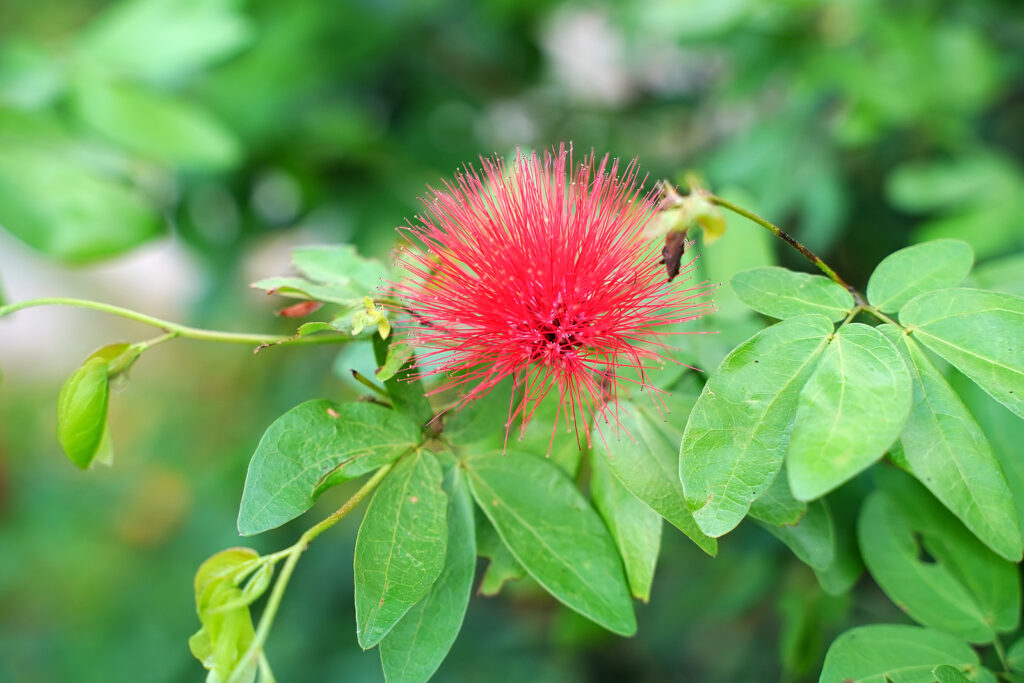
Propagating Calliandra
Calliandra can be propagated by seeds, cuttings, or layering:
- Seeds: Seeds should be soaked in warm water for 24 hours before planting to help them germinate. Sow the seeds in a well-draining potting mix and keep them moist until they sprout.
- Cuttings: Take semi-hardwood cuttings in late spring or summer. Use a rooting hormone to encourage root development, and place the cuttings in a well-draining potting mix.Keep the cuttings in a warm, humid environment until they establish roots.
- Layering: Bend a low-growing branch to the ground and cover a portion of it with soil, leaving the tip exposed. Roots will form where the branch touches the soil.
Pests and Diseases
Calliandra is generally resistant to serious pest and disease problems, but it’s good to keep an eye out for:
- Aphids and Mealybugs: These pests may occasionally infest the plant, feeding on the sap. Treat infestations with insecticidal soap or neem oil.
- Spider Mites: Can appear in hot, dry conditions. Increase humidity around the plant or use a strong spray of water to dislodge them.
- Root Rot: Can occur if the plant is in poorly drained soil or overwatered. Ensure proper drainage to prevent this issue.
Using Calliandra in the Garden
- Hedges and Borders: Calliandra’s dense foliage and colorful flowers make it ideal for creating informal hedges or mixed borders.
- Container Planting: It grows well in containers, allowing it to be used as a patio plant or brought indoors during cold weather.
- Pollinator Gardens: The flowers attract hummingbirds, bees, and butterflies, making Calliandra a perfect choice for a pollinator-friendly garden.
- Tropical or Mediterranean Landscapes: Its vibrant flowers and foliage add a lush, exotic feel to tropical or Mediterranean-style gardens.
- Specimen Plant: Use it as a standalone feature plant to showcase its stunning blooms and interesting foliage.
Benefits of Growing Calliandra
- Attracts Wildlife: The bright flowers attract pollinators, including hummingbirds and butterflies.
- Long Bloom Period: Many Calliandra species bloom over an extended period, providing continuous color.
- Drought Tolerant: Once established, Calliandra is relatively drought-tolerant, making it suitable for xeriscaping.
- Low Maintenance: Requires minimal care once established, making it a good choice for low-maintenance gardening.
Popular Calliandra Species
- Calliandra haematocephala (Red Powder Puff): Known for its large, bright red, puffball-shaped flowers and pinnate leaves. It can grow up to 15 feet tall and is popular in tropical gardens.
- Calliandra surinamensis (Surinam Powder Puff): Features smaller pinkish-white flowers and is more compact in size. It can grow to about 8 feet in height.
- Calliandra eriophylla (Pink Fairy Duster): Native to the southwestern U.S., this drought-tolerant species produces delicate pink or white flowers. It grows to about 3 feet tall, making it suitable for smaller gardens.
- Calliandra tweedii (Brazilian Flame Bush): Has bright red flowers and grows as a compact shrub, typically reaching 4-6 feet in height. It is ideal for container planting.
Calliandra Summary
Calliandra is a beautiful and versatile plant that can bring color, texture, and wildlife to the garden. Whether used as a hedge, container plant, or specimen, its striking powder puff flowers and easy-care nature make it a wonderful addition to many landscapes. By providing the right light, soil, and water conditions, and with minimal pruning and fertilization, Calliandra will thrive and reward you with stunning blooms throughout the growing season.

